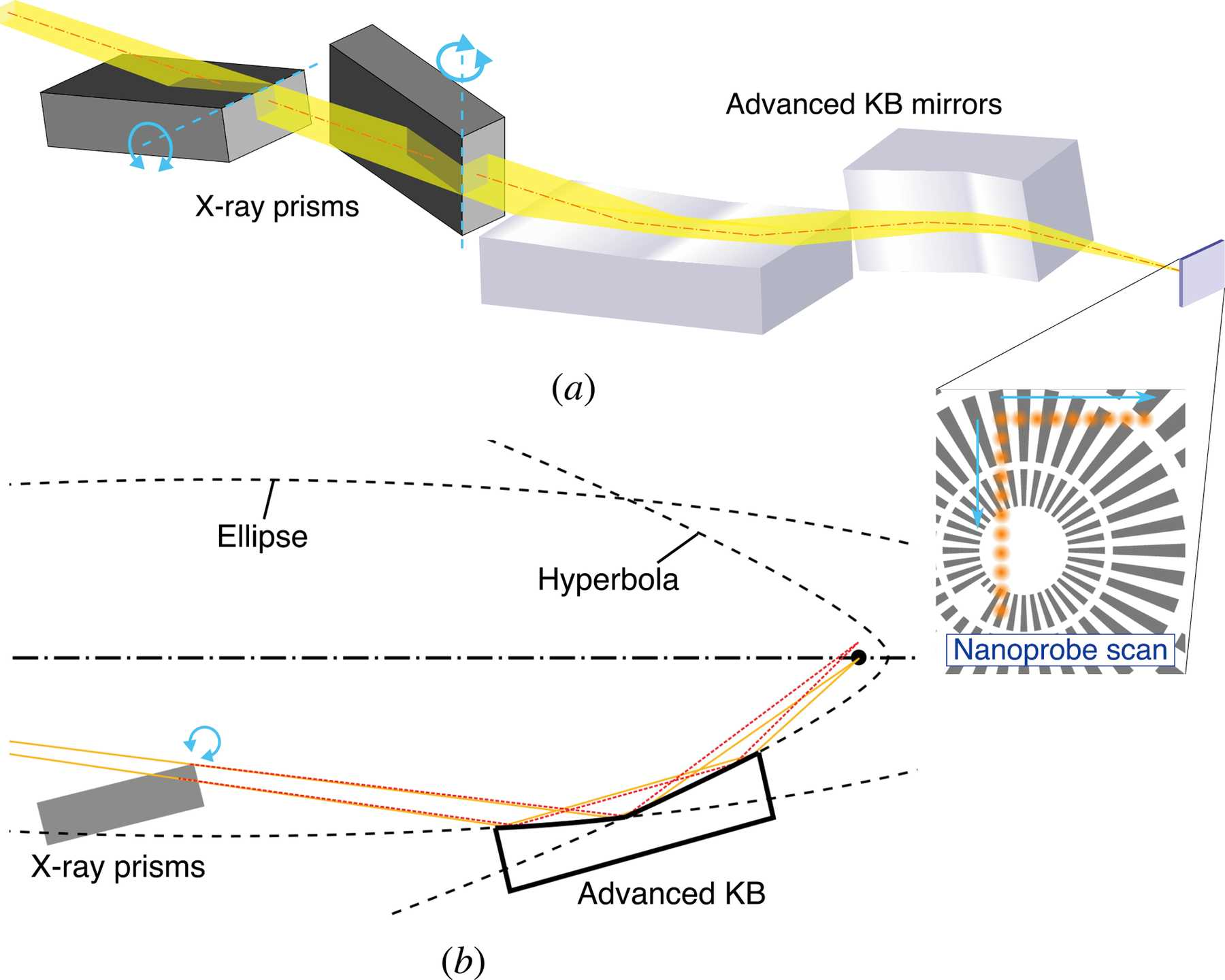
RIKEN: New technology of scanning X-ray microscope: X-ray nanoprobe scanner
-Scan with 20x accuracy without moving the sample-
RIKEN
Nagoya University
Osaka University
The joint research group has developed a new high-precision scanning technology “X-ray nanoprobe scanner” for scanning X-ray microscopes.
You can scan the sample without moving it,
Scan accuracy achieved 1 nanometer for several atoms,
It has achieved 10 to 20 times that of the conventional method.
X-ray nanoprobe scanner:
Nano-resolution X-ray microscope observation and
For the sophistication of X-ray spectroscopic analysis.
It is expected to contribute to high-precision scanning technology.
X-ray prism
Reflective X-ray lens
X-ray prism:
An “X-ray prism” is a refracting prism that functions in the X-ray region.
The X-ray prism bends the traveling direction of X-rays at an ultra-small angle of 1/1000 degree level.
Reflective X-ray lens:
An optical element “reflective X-ray lens” that collects and forms an image using the reflection phenomenon of X-rays is combined.
A reflective X-ray lens is used to collect X-rays as thinly as 50 nanometers and irradiate the sample.
SPring 8:
The result of scanning the sample without moving it at the beamline of the large synchrotron radiation facility “SPring 8”.
An X-ray microscope image resolving a minimum structure of 50 nanometers could be obtained.
Conventional scanning X-ray microscope:
With a scanning X-ray microscope
“Relative positional relationship between X-ray probe and sample”,
It is necessary to scan with high accuracy.
Conventionally, it has been considered difficult to bend X-rays.
Therefore, devices that scan samples instead of X-rays have been the mainstream.
New switch
(IUCr) Hard X-ray nanoprobe scanner
X-ray scientists are continually striving to improve the quality of X-ray microscopy, due to the fact that
the information obtained from X-ray microscopy of materials can be complementary to that obtained from optical and electron microscopes.
In contrast to the ease with which one can deflect electron beams, the relative difficulty to deflect X-ray has constrained the development of scanning X-ray microscopes (SXMs) based on a scan of an X-ray small probe.
This restriction
has caused severe complications that hinder progress toward achieving ultimate resolution.Here,
a simple and innovative method for constructing an SXM equipped with a nanoprobe scanner is proposed.The nanoprobe scanner
combines X-ray prisms and advanced Kirkpatrick–Baez focusing mirrors.
By rotating the prisms on the order of degrees, X-ray probe scanning with single-nanometre accuracy can be easily achieved.
The validity of the concept
was verified by acquiring an SXM image of a test pattern at a photon energy of 10 keV, where 50 nm line-and-space structures were resolved.This method is readily applicable
to an SXM with a single-nanometre resolution and will assist effective utilization of increasing brightness of fourth-generation synchrotron radiation sources
https://journals.iucr.org/m/issues/2021/05/00/ro5029/index.html